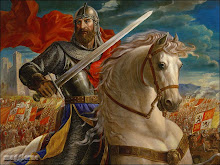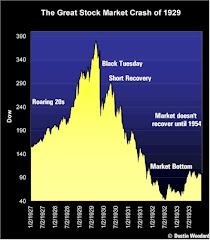Concern over public sector unions is being reflected across the country. The public sector is the only bastion of unions. Private sector unions are almost dead. It appears public sentiment is turning against the public sector ones.
A battle is beginning and it is tied into the gold-plated pension issue.
The tide has turned in Toronto with the election of a mayor who had a slogan of respect for taxpayers. Is the rest of the country far behind? It will be very interesting the see the effects of the US election!
The battle will be a doozy. Are you ready?
The battle will be a doozy. Are you ready?
Election Season
For the first time since the Great Recession voters have had a chance to send politicians their thoughts and anger. Municipal elections across Ontario tossed incumbent mayors. Gwyn Morgan has shed light on some of the reasons behind the election results.
He wrote an article today in the Globe and Mail. Toronto election offers chance to reform public sector
He wrote an article today in the Globe and Mail. Toronto election offers chance to reform public sector
The article also offers some suggestions to get fiscal control back in Canada and to offer taxpayers some respect.
End union powers that hold citizens hostage: Turn important unionized monopoly public services into “essential services” in which strikes are forbidden. Insist that essential service union contracts reflect private sector competitive rates. Back that up with severe penalties for unions and union leaders who advocate illegal strikes, and the right to fire workers who strike illegally.
End compulsory union membership: Current laws force those seeking jobs in unionized workplaces to join the union. There should be an end to laws that deprive individuals of the right to work outside a union. This bridge has already been crossed; for example, 22 American states prohibit agreements between unions and employers that make membership and payment of union dues a condition of employment.
Union membership is dying in the private sector.
It appears that the only major remaining support for unions is in the public sector. In Canada not many private sector workers are unionized. On the other had the public sector's 3.6 million workers are almost all unionized.
It appears that the only major remaining support for unions is in the public sector. In Canada not many private sector workers are unionized. On the other had the public sector's 3.6 million workers are almost all unionized.
There are only 4.4 million union workers in Canada. Statscan - Union Membership in Canada
US Election
Unions members in the US are running scared. They are afraid that electing fiscally responsible politicians will hurt them in the pocketbook.
The highlighting of election spending by unions has forced the spotlight upon them. In this electoral season they will be by far the biggest spenders in the current elections.
It has not helped that the media has covered the extent of their political contributions and the candidates they have gone to. This election should have been about the fraud taking place in corporate America but somehow it has turned on the public sector.
Unions in the US have been estimated to spent $87 million on the current election. This compares to an estimate of $30 million for the national Chambers of Commerce. Considering the rise of the Tea Party this spending creates a big risk for union backlash if the Republicans win. The ‘big dog’ in campaign spending
The highlighting of election spending by unions has forced the spotlight upon them. In this electoral season they will be by far the biggest spenders in the current elections.
It has not helped that the media has covered the extent of their political contributions and the candidates they have gone to. This election should have been about the fraud taking place in corporate America but somehow it has turned on the public sector.
Unions in the US have been estimated to spent $87 million on the current election. This compares to an estimate of $30 million for the national Chambers of Commerce. Considering the rise of the Tea Party this spending creates a big risk for union backlash if the Republicans win. The ‘big dog’ in campaign spending
A columnist by the name of Jeff Jacoby has provided some excellent insights into the problem of public sector pensions in America. His excellent article What public-sector unions have wrought exposes some of these problems.
In the ensuing half-century, (since the '50's) the public sector in the United States has grown enormously. The number of government employees at all levels surged from about 8.2 million in 1959 to 22.5 million in 2009. Historically, government work paid less than comparable employment in the private economy, but greater job security and good pensions compensated for the lower wages. No longer: now government workers tend to fare better than private-sector workers across the board—not only in job security and pensions but in wages and other benefits as well.
Nationwide, according to BLS data for 2009, state and local government employees were paid an average wage of $26.01 per hour, which was 34 percent higher than the average private-sector wage of $19.39 per hour. Even more lopsided was the public-sector advantage in fringe benefits, such as health and life insurance, paid vacations and sick leave, and—above all—retirement income: state and local governments provided their workers with benefits valued, on average, at $13.65 per hour, a 70 percent premium over the average benefits package in the private sector. In addition to being more expensive, the benefits that come with government jobs are provided to more employees. Life insurance, for example, was offered to 80 percent of employees working for the government but to just 59 percent of workers in the private sector. Traditional defined-benefit pension plans were available to 84 percent of government workers—but to only 21 percent of private employees.
In 2008, the 1.9 million civilians employed by Uncle Sam were paid, on average, an annual salary of $79,197, according to the Commerce Department's Bureau of Economic Analysis. The average private employee earned just $49,935. The difference between them came to more than $29,000 -- a disparity that has more than doubled since 2000. Add benefits to the mix and the federal advantage is even more striking. Total federal civilian compensation in 2008 averaged $119,982—more than twice the $59,908 in wages and benefits earned by the average private-sector employee. Edwards has tracked the inexorable widening of that gap: federal employees in 1960 averaged $1.24 for every $1 earned by an American in the private sector. By 1980, that $1.24 had grown to $1.51; in 2000 it was up to $1.66. Now it is $2—and climbing.
IT IS NOT by happenstance that the growth in public-sector union jobs—from a trivial share of overall union membership 50 years ago to a majority today—has coincided with so vast an expansion of government and of its employees' pay and perquisites. As FDR had foreseen, there are crucial differences between collective bargaining in the public and private sectors. Labor unions negotiating on behalf of government employees enjoy at least four potent advantages, which they long ago learned to exploit.
First, unlike their counterparts in the private sector, government unions are largely free from market discipline. Unions operating in the private economy know that there are limits to the demands they can make of an employer; private firms have to earn a profit to stay alive, and competition swiftly punishes those that fail to control cost and quality.
A second advantage lies in the difference between public- and private-sector strikes. In business, a strike (or the threat of a strike) is an economic weapon that takes a toll on both sides: management suffers the loss of business, and labor must absorb the loss of wages. Consumers may experience some inconvenience, but they generally have the option of switching to another supplier or deferring their transaction to a later date. In the public sector, by contrast, strikes are political weapons. Because government services tend to be legal monopolies, a strike by police, garbage collectors, teachers, or air-traffic controllers inflicts pain on the public at large.
A third advantage: in public-sector collective bargaining, labor and management frequently both stand to benefit from higher wages and more munificent retirement income. After taxpayer activists in California last year used the Freedom of Information Act to procure a list of government retirees receiving more than $100,000 annually in pension payments, the Sacramento Bee noticed who was on it:Managers also dominate the $100,000 club list. These are the people who are supposed to represent the public when employee benefits are negotiated. But when government managers sit down with union leaders to dicker over compensation, they are negotiating for themselves as well. If rank-and-file workers get a wage or benefit boost, non-union managers get a commensurate hike and a matching pension benefit.But a fourth advantage is more significant than any of these: government labor unions can reward politicians who give them what they want and punish those who don't. As a result, negotiations in the public sector have an inherent bias toward higher salaries, more lavish benefits, and more inflexible work rules. "This is because public unions can organize politically and influence elections,"
The whole of this article is worth reading and I urge you to do so.
At the inception of unions in the 1930''s the danger of public sector unions was recognized. It was the president FDR who understood these dangers and in 1937 he stated
Danger of Public Sector Unions - FDR 1937
"... Meticulous attention should be paid to the special relationships and obligations of public servants to the public itself and to the government. All Government employees should realize that the process of collective bargaining, as usually understood, cannot be transplanted into the public service. It has its distinct and insurmountable limitations ... The very nature and purposes of Government make it impossible for ... officials ... to bind the employer ... The employer is the whole people, who speak by means of laws enacted by their representatives ...
"Particularly, I want to emphasize my conviction that militant tactics have no place in the functions of any organization of government employees. Upon employees in the federal service rests the obligation to serve the whole people ... This obligation is paramount ... A strike of public employees manifests nothing less than an intent ... to prevent or obstruct ... Government ... Such action, looking toward the paralysis of Government ... is unthinkable and intolerable.
Bill Tufts
Fair Pensions For All




No comments:
Post a Comment